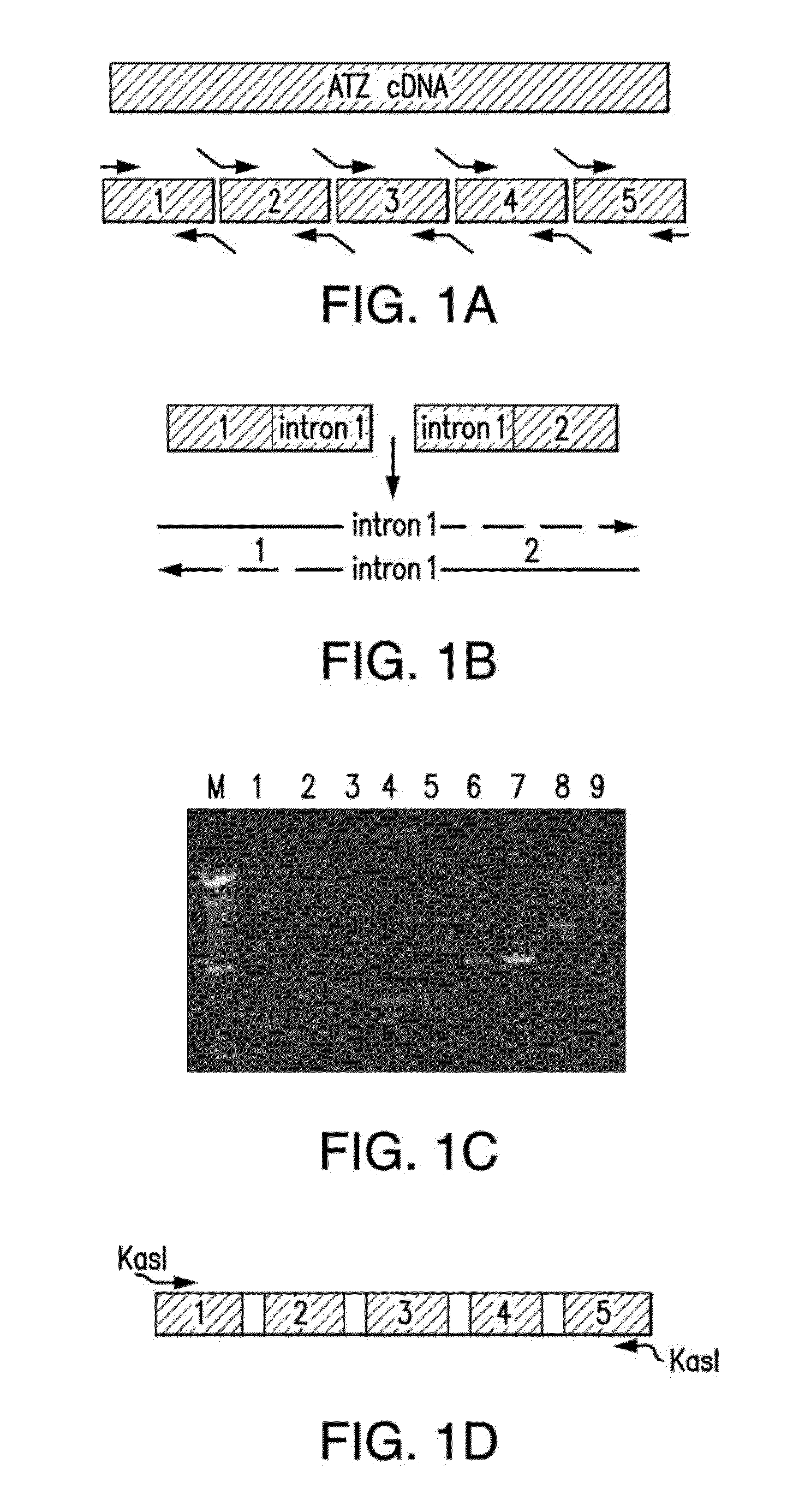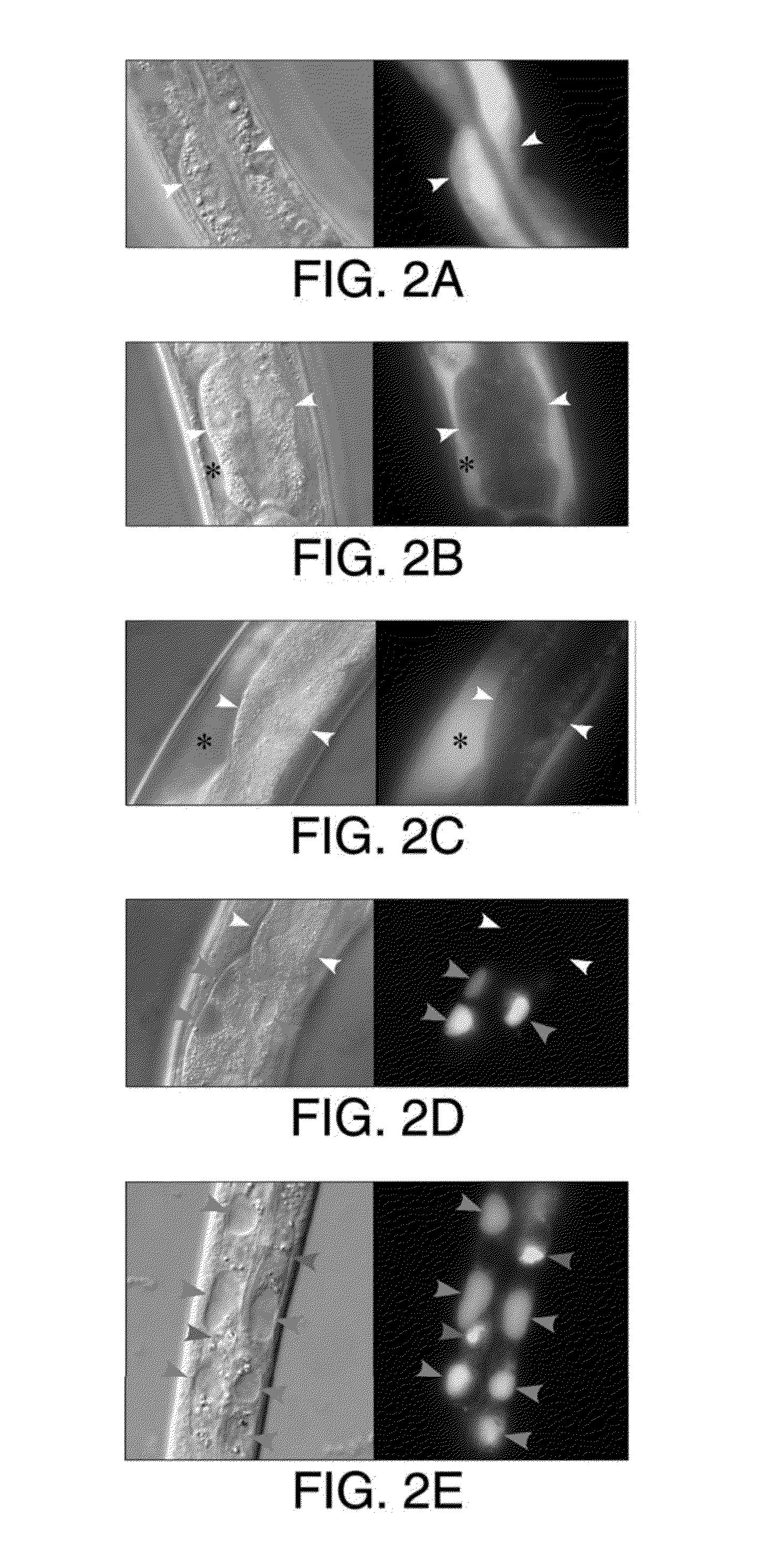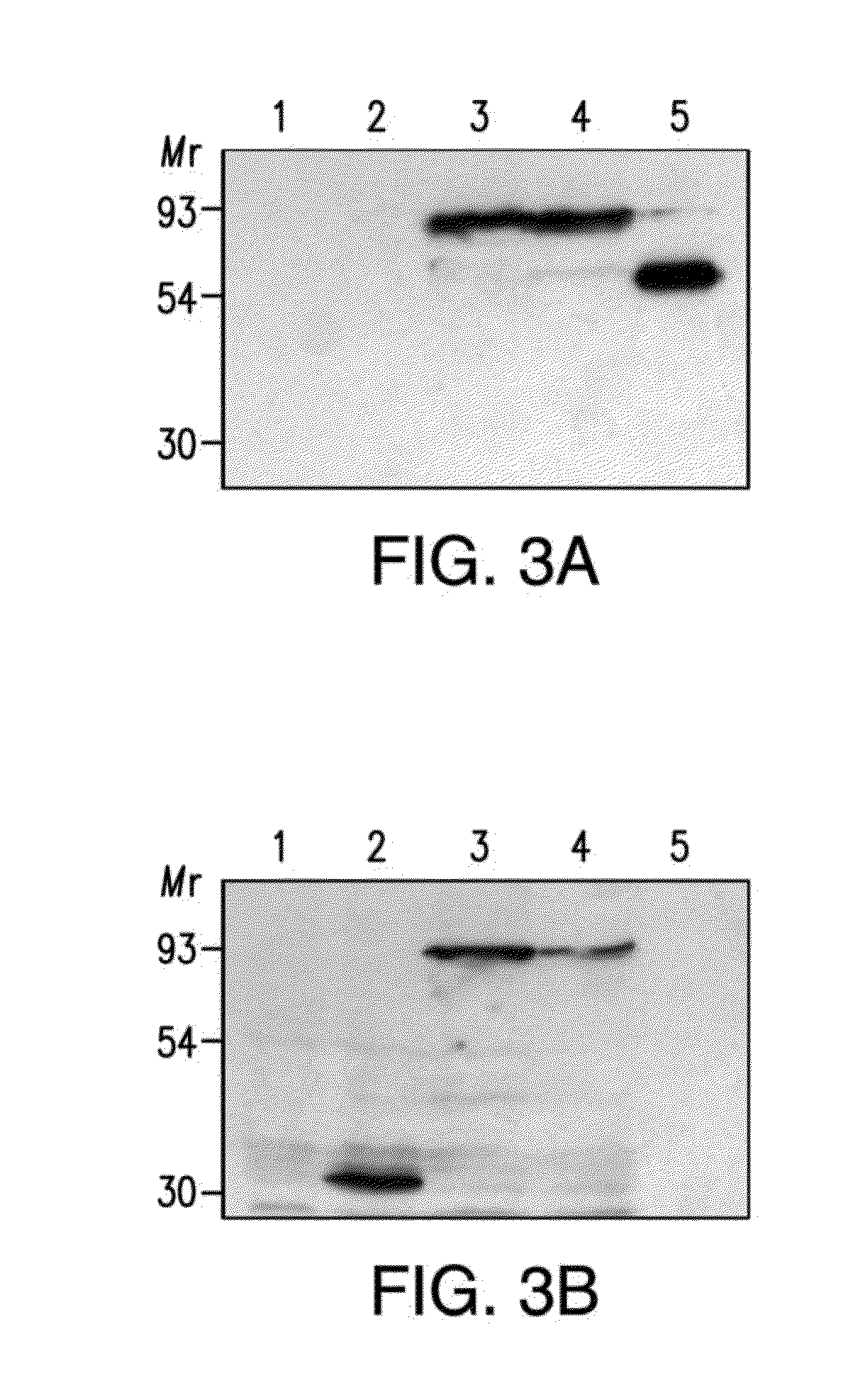Automated high-content live animal drug screening using c. elegans
a live animal and high-content technology, applied in the field of automatic high-content live animal drug screening using c. elegans, can solve the problems of improper protein processing and aggregate formation, mutant alleles are susceptible to premature development of chronic obstructive pulmonary disease, and the load of oligomers may be too large to avoid toxic a accumulation, etc., to eliminate a major bottleneck in the screening process, high content, and high throughput screening
- Summary
- Abstract
- Description
- Claims
- Application Information
AI Technical Summary
Benefits of technology
Problems solved by technology
Method used
Image
Examples
Embodiment Construction
[0041]For clarity of description and not by way of limitation, the detailed description of the invention is divided into the following subsections:
[0042](i) constructs;
[0043](2) model systems; and
[0044](3) assays.
5.1 Constructs
[0045]The present invention provides for at least two types of constructs: first, an aggregation-prone protein construct which encodes a protein with a tendency to aggregate (which may also be referred to as a “aggregatable protein”), the expression of which results in the generation of aggregated protein in C. elegans and second, a marker construct which comprises a marker gene that encodes a marker protein, the expression of which assists in the characterization of animals in the assay, either by facilitating counting, developmental staging, organ localization, or some other characterization of the worm. Said constructs may comprise a promoter active in C. elegans which may optionally confer tissue specific, location-specific, and / or developmental stage-spec...
PUM
 Login to View More
Login to View More Abstract
Description
Claims
Application Information
 Login to View More
Login to View More - R&D
- Intellectual Property
- Life Sciences
- Materials
- Tech Scout
- Unparalleled Data Quality
- Higher Quality Content
- 60% Fewer Hallucinations
Browse by: Latest US Patents, China's latest patents, Technical Efficacy Thesaurus, Application Domain, Technology Topic, Popular Technical Reports.
© 2025 PatSnap. All rights reserved.Legal|Privacy policy|Modern Slavery Act Transparency Statement|Sitemap|About US| Contact US: help@patsnap.com



